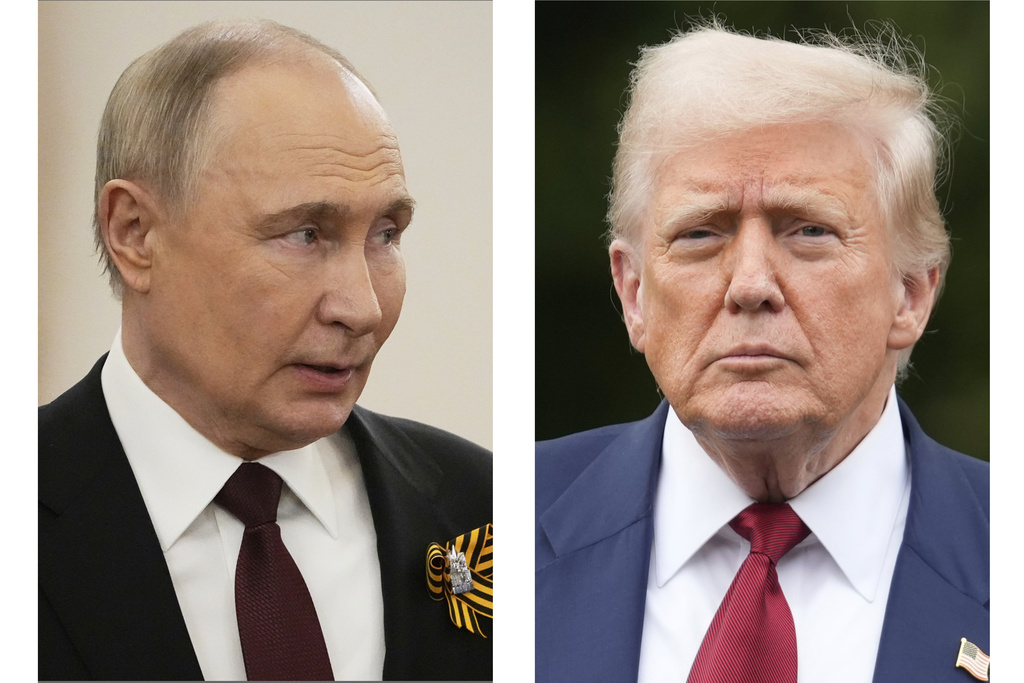What Must Happen Before the End of Trump’s Ultimatum to Putin

How the U.S. ultimatum, new sanctions, and military support for Ukraine could change the course of the war.
Trump’s Ultimatum: A Signal of Strength or Room for Putin?
On July 14, 2025, Donald Trump sharply altered his strategy regarding methods to end the war in Ukraine. He gave Vladimir Putin 50 days to conclude a peace agreement concerning Ukraine. Otherwise, the United States would impose radical economic restrictions: 100% tariffs on the import of Russian goods and secondary sanctions against countries purchasing Russian oil. This decision was announced during Trump’s meeting with NATO Secretary General Mark Rutte.
However, this policy has sparked mixed reactions. In particular, Ukrainian President Volodymyr Zelenskyy emphasized that 50 days is not a political pause but two months of real losses: dead Ukrainians, destroyed infrastructure, and terror against civilians. The Kremlin, having been granted a time advantage, may attempt to use it for regrouping, intensifying shelling, advancing on certain frontline sectors, and – most importantly – continuing its offensive along the entire front line.
On July 28, Donald Trump announced that he was shortening the duration of his ultimatum and wanted Russia to make a decision on starting peace negotiations within 10-12 days.
These few weeks represent a chance for the West to increase pressure on Russia in such a way that Moscow has no choice but to compromise. This period should be used not for observation but for preparing a multilevel campaign – military, economic, and diplomatic.
The U.S. and EU Are Preparing a Massive Sanctions and Military Strike
Trump’s ultimatum must be accompanied by concrete preparatory steps. In Washington, sanction packages are already being developed, covering not only 100% tariffs on all imports from Russia but also the application of secondary sanctions – restrictions against third countries. India, China, Turkey, and Saudi Arabia – states that still maintain trade ties with Russia, particularly in the energy sector – could come under pressure.
Simultaneously, Brussels has begun discussions on the EU’s 19th sanctions package. A key issue could be cooperation with Rosatom, the last of Russia’s major state players actively operating in the EU market, particularly in Hungary, the Czech Republic, and Bulgaria. Including it on the sanctions list would signify crossing a red line – the EU’s readiness to sacrifice even energy cooperation for the sake of strategic pressure on Moscow.
The new restrictions will not be limited to trade tariffs alone. Financial sanctions against second-tier Russian banks are expected, as well as restrictions on the re-export of dual-use technologies. The sanctions list may also include satellite companies supplying components for drones and missiles through third-party providers.
Finally, the U.S. and EU will intensify diplomatic pressure on Beijing and Delhi, leveraging tools in trade, investment, and high-tech sectors. The main goal is to isolate Russia not only formally but also in practice, making trade with it toxic even for major powers that have so far maintained neutrality or an ambiguous stance.
Weapons for Peace: What Ukraine Must Receive by September
At the core of this process is strengthening Ukraine’s defense capabilities. Following the latest “Ramstein” meeting, Western countries have accelerated arms deliveries. This includes not only ammunition and armored vehicles but also air defense systems: Patriot, NASAMS, and IRIS-T. At the same time, information has emerged about the first joint projects for localizing the production of air defense components in Ukraine – a sign of long-term military-industrial cooperation.
The main news, however, is the discussion of strengthening Ukraine’s missile forces. For the first time, Ukraine may receive missiles with a range of up to 1,000 km, enabling strikes on strategic targets deep inside Russian territory. This is not only a tool for war but also a powerful element of security guarantees after its conclusion. This new type of weaponry is increasingly viewed as a “non-nuclear deterrence package” – one of Ukraine’s post-war security guarantees.
A separate component is the launch of a model for purchasing American weapons with funds from European countries. This mechanism allows for the rapid transfer of necessary weaponry to Ukraine while avoiding confrontations with Trump’s rhetoric. It is a signal of synchronized efforts within the transatlantic alliance and a new level of collective responsibility.
What Will Happen After the Ultimatum Ends: Two Scenarios
The key date on the global calendar is September 3 – the 80th anniversary of the victory over Nazism, which will be celebrated in Beijing. It is on this day that a possible meeting involving Xi Jinping, Trump, and Putin is being prepared. China seeks to seize the moment to strengthen its role as a global mediator. This could be the Kremlin’s last chance to secure a “face-saving” agreement if Putin makes concessions – for example, relinquishing control over some occupied territories or dropping demands for Ukraine’s “demilitarization.”
But if not, a new phase of Russia’s isolation will begin. Trump’s strike will be economically painful for both the Kremlin and its allies. In this case, the conflict will continue, but on entirely different terms – with large-scale rearmament of Ukraine, strategic containment of Russia, and the collapse of the Kremlin’s illusions about the “West’s fatigue.”
These days for reaching an agreement are the last diplomatic corridor, after which either pressure will break the war, or the war will have to be broken by force. Unlike Russia, Ukraine is prepared for both scenarios. And Russia must provide its response in the coming days. After all, the end of the war depends primarily on the one who started it – the leadership of the Russian Federation.
Igor Popov, head of United Ukraine Think Tank, expert on political and security issues